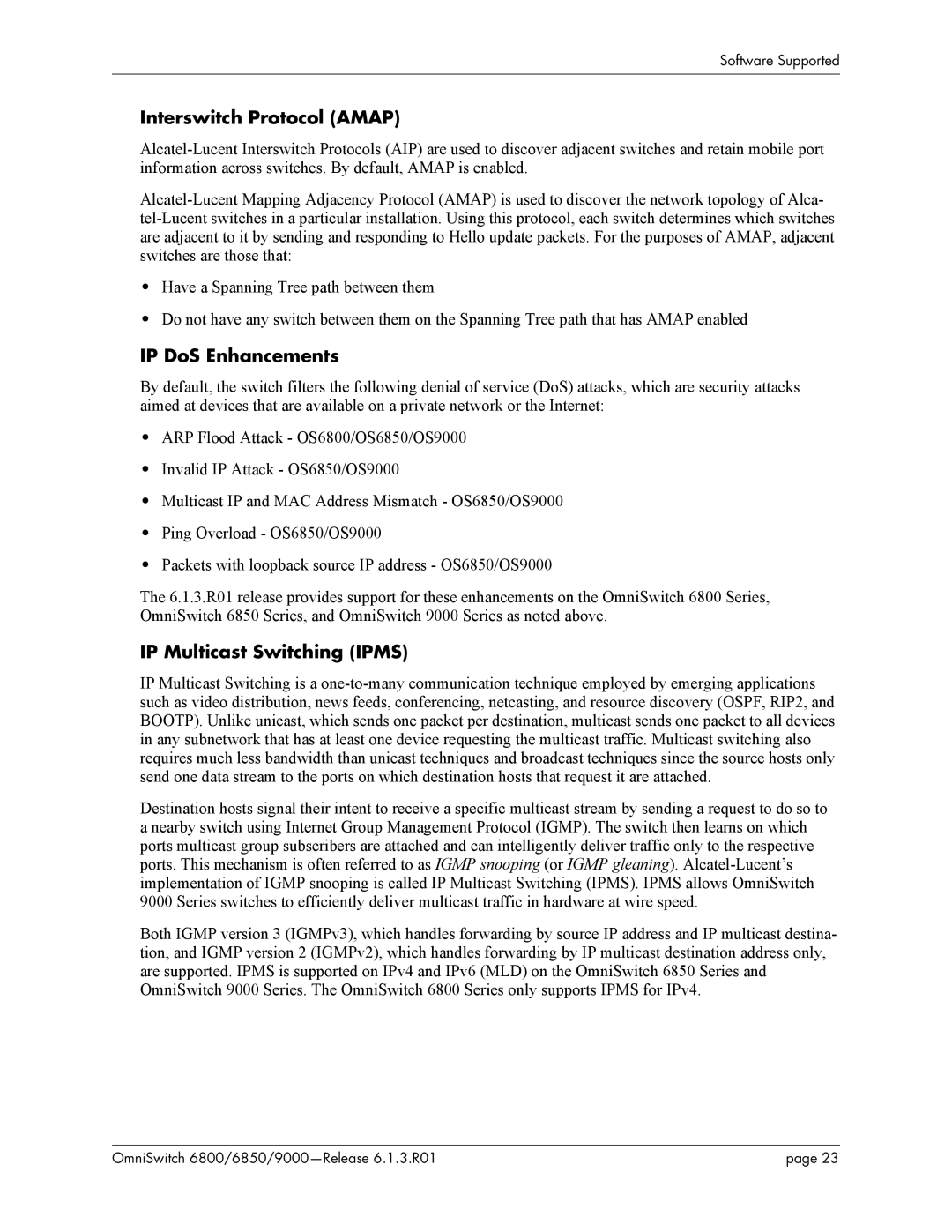
Software Supported
Interswitch Protocol (AMAP)
•Have a Spanning Tree path between them
•Do not have any switch between them on the Spanning Tree path that has AMAP enabled
IP DoS Enhancements
By default, the switch filters the following denial of service (DoS) attacks, which are security attacks aimed at devices that are available on a private network or the Internet:
•ARP Flood Attack - OS6800/OS6850/OS9000
•Invalid IP Attack - OS6850/OS9000
•Multicast IP and MAC Address Mismatch - OS6850/OS9000
•Ping Overload - OS6850/OS9000
•Packets with loopback source IP address - OS6850/OS9000
The 6.1.3.R01 release provides support for these enhancements on the OmniSwitch 6800 Series, OmniSwitch 6850 Series, and OmniSwitch 9000 Series as noted above.
IP Multicast Switching (IPMS)
IP Multicast Switching is a
Destination hosts signal their intent to receive a specific multicast stream by sending a request to do so to a nearby switch using Internet Group Management Protocol (IGMP). The switch then learns on which ports multicast group subscribers are attached and can intelligently deliver traffic only to the respective ports. This mechanism is often referred to as IGMP snooping (or IGMP gleaning).
Both IGMP version 3 (IGMPv3), which handles forwarding by source IP address and IP multicast destina- tion, and IGMP version 2 (IGMPv2), which handles forwarding by IP multicast destination address only, are supported. IPMS is supported on IPv4 and IPv6 (MLD) on the OmniSwitch 6850 Series and OmniSwitch 9000 Series. The OmniSwitch 6800 Series only supports IPMS for IPv4.
OmniSwitch | page 23 |
